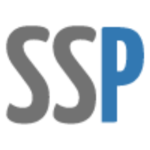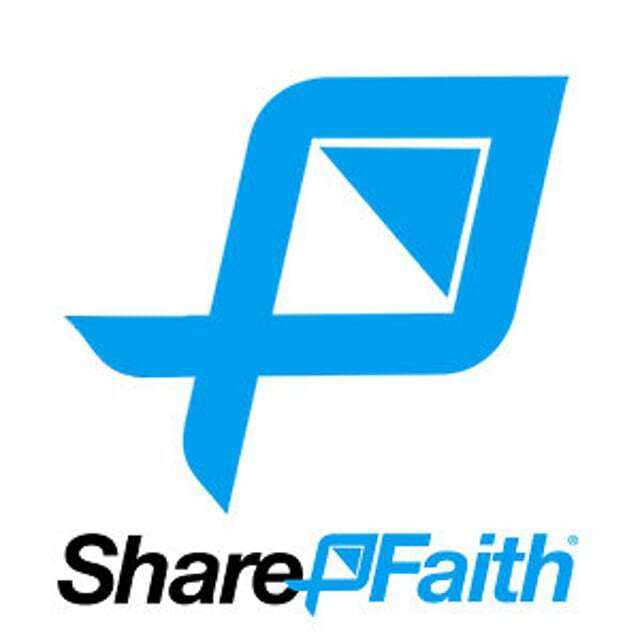What Is Worship Software?
Worship software is a digital platform or tool intended to support and improve worship services and related religious activities. This software facilitates the organization and management of multiple components of a worship gathering, including song lyrics, prayers, sermon notes, and media presentations.
A primary characteristic of worship software is its capacity to generate visually engaging and dynamic presentations suitable for projection onto screens or monitors within the worship environment. This enhances the aesthetic value of the service while offering a practical method for displaying essential information and maintaining congregation engagement.
Moreover, worship software typically features a database of songs and hymns, facilitating the search and selection of suitable music for each service by worship leaders. Certain software provides the functionality to transpose songs into different keys, which is beneficial for accommodating diverse vocal ranges.
The scheduling tool facilitates efficient planning and coordination of church activities. This encompasses the scheduling of volunteers and musicians, along with the management of worship facility usage. Numerous worship software solutions provide remote access features, facilitating collaboration and integration among team members.
This is particularly advantageous for churches with multiple worship teams or those conducting services in various locations. When evaluating worship software for purchase, it is essential to prioritize a user-friendly interface and customizable features that align with the specific requirements of your church. Certain software may provide supplementary features, including online giving, event registration, and sermon recording and distribution.
What Are the Recent Trends in Worship Software?
Recent years have witnessed a notable rise in the accessibility and utilization of worship software within churches and religious organizations. This trend is influenced by the increasing demand for digital solutions that improve worship experiences and optimize administrative processes.
This guide examines current trends in worship software to assist organizations in making informed decisions.
1. Cloud-based solutions: The adoption of web-based or cloud-based worship software has gained significant traction in recent years. This enables churches to utilize the software from any device and location with internet access. It eliminates the necessity for costly hardware and software installations.
2. Mobile-friendly options: The proliferation of mobile technology has prompted worship software companies to concentrate on creating mobile-compatible solutions. These applications enable church leaders and members to access worship resources, facilitate communication, and process donations via their smartphones.
3. Integration with social media: Churches are utilizing social media platforms to engage with their communities and promote worship services in the context of a digitally connected world. Numerous worship software solutions currently provide integration with widely used social media platforms, facilitating enhanced connectivity between churches and their audiences while enabling effective message dissemination.
4. Improved communication features: Effective communication is a critical component of a successful worship experience. Recent developments in worship software encompass functionalities such as group messaging, event reminders, and online event registration, facilitating improved communication between churches and their members while enhancing engagement.
5. Online giving: As cash and check payments decline, numerous worship software companies have introduced online giving options, enabling members to donate securely and conveniently. This feature enables churches to track and report donations in real-time, thereby enhancing the efficiency of financial management.
6. Customization and personalization: Each church possesses distinct needs, prompting worship software companies to provide tailored solutions that address these specific requirements. This enables churches to customize the software according to their worship style, music selection, and additional features.
7. Data analytics: Worship software solutions are increasingly integrating data analytics tools to offer churches insights into audience demographics, service attendance, and donation patterns. This information assists churches in making informed decisions to enhance their worship services and better engage with their community.
Benefits of Using Worship Software
Worship software is gaining popularity in churches and religious institutions due to its numerous advantages for congregations and worship leaders.
The utilization of worship software offers several key advantages, including the optimization of service planning and the improvement of the overall worship experience.
1. Streamlines service planning: A primary advantage of worship software is its capacity to enhance and simplify the process of service planning. Worship software, featuring customizable templates and extensive libraries of songs, prayers, and scriptures, streamlines planning processes and minimizes the potential for human error.
2. Organizes multimedia content: Worship software facilitates the integration of multimedia elements, including videos, images, and PowerPoint presentations, thereby enhancing the visual engagement of services. This is advantageous for churches with multiple locations, as the same service can be streamed or recorded for future use.
3. Enhances communication: Numerous worship software programs include features that enable efficient communication among worship leaders, volunteers, and the congregation. This encompasses messaging capabilities, team organization tools, and volunteer scheduling, facilitating coordination and connectivity.
4. Improves worship experience: Worship software enables churches to provide more dynamic and engaging worship experiences. On-screen lyrics, live worship leader notes, and customizable backgrounds contribute to a more immersive and meaningful worship experience.
5. Offers analytical insights: Certain worship software programs include analytical tools that yield valuable information regarding attendance, participation, and song selection. This data assists churches in making informed decisions regarding service planning and enhances their understanding of congregation needs.
6. Enhances efficiency: Automating tasks such as song selection, schedule creation, and volunteer management allows worship software to conserve significant time for worship leaders and volunteers. This may enhance efficiency and enable a focus on other critical aspects of their responsibilities.
7. Provides economical alternatives: Worship software presents multiple pricing structures, rendering it a financially viable solution for churches of varying sizes. This indicates that smaller churches with constrained budgets can utilize worship software and its functionalities effectively.
Important Factors to Consider While Purchasing Worship Software?
Several factors should be considered when purchasing worship software to ensure the selection of the most suitable product for your needs.
Key factors to consider when purchasing worship software include:
1. Compatibility Considerations: Prior to purchasing, it is crucial to verify that the software is compatible with your existing hardware and operating system. This encompasses compatibility with the projector, sound system, and preferred presentation software.
2. Customization Options: Each worship service possesses distinct characteristics, necessitating software that enables the customization and design of presentations in alignment with individual preferences. Seek software that provides a range of templates, themes, and design options to facilitate a customized experience for your congregation.
3. Ease of Use: Worship leaders frequently face time constraints, making it undesirable to contend with complex software during a service. Seek software that features an intuitive interface and straightforward navigation to enhance efficiency and minimize technical challenges.
4. Multimedia Capabilities: Effective worship software must provide multimedia features, including videos, audio, images, and lyrics, to enhance the service experience. It should facilitate seamless integration with worship-related media sources such as CCLI, SongSelect, and YouTube.
5. Cost: The budget is a critical factor in the decision-making process for any purchase. Investigate various software alternatives and their pricing structures to identify the option that aligns with your budget while maintaining essential features.
6. Technical Support: The use of software may lead to technical issues, making it essential to have dependable technical support available for assistance. Seek software that provides continuous customer support, live chat functionality, and a comprehensive knowledge base to guarantee timely and effective assistance as required.
7. Mobile Accessibility: The increasing prevalence of technology has led many churches to integrate phones and tablets into their worship services. Seek software that offers mobile accessibility, enabling control of presentations from your device, thereby facilitating engagement with your congregation.
8. Reviews and Recommendations: Prior to purchasing, it is essential to conduct research and examine reviews from fellow worship leaders who have utilized the software. This will provide insights into its advantages and disadvantages, facilitating an informed decision-making process.
Considering these factors enables the selection of appropriate worship software, which can enhance the worship experience and facilitate the creation of meaningful services for the congregation. It is essential to prioritize your specific requirements and budget. Additionally, consider requesting a demonstration or trial prior to making a final decision.
What Are the Key Features to Look for in Worship Software?
When selecting Worship Software, it is essential to evaluate the key features that will improve your worship experience. The features will enhance the software's usability and facilitate effective leadership of your congregation.
When making a purchase decision, consider the following essential features:
1. Song Database: A comprehensive database of worship songs is an essential feature. This facilitates rapid and effortless access to preferred songs, thereby conserving time and effort.
2. Customization Options: Seek software that provides customizable features, including the capability to create song arrangements, implement key changes, and modify tempos. This feature enables customization of songs based on individual worship styles and preferences.
3. Presentation Tools: The software must include features that facilitate the creation of engaging and visually appealing presentations. Consider incorporating features such as background images, video integration, and lyric formatting options to enhance the worship experience.
4. Multi-Platform Compatibility: Select software that is operable across various devices, including laptops, tablets, and mobile phones. This enables access to worship lyrics and presentations at any time and from any location.
5. Collaboration Features: For team-based work, it is advisable to select software that facilitates collaboration. This feature allows multiple users to collaborate on the same project concurrently, facilitating coordination and enhancing the efficiency of worship planning.
6. Audio and Video Integration: Certain software provides the capability to incorporate audio and video into presentations, facilitating a dynamic and immersive worship experience. This feature is particularly beneficial for churches that integrate multimedia components into their worship services.
7. Cloud Storage: A software solution that provides secure cloud storage for worship songs and presentations is essential. This feature guarantees comprehensive data backup and accessibility, regardless of device loss or damage.
The software must possess an intuitive and accessible interface. An intricate and unclear interface may impede the worship planning process and induce unwarranted stress.
Considering these key features enables an informed decision when selecting Worship Software that aligns with your requirements and improves your worship experience. Consider the particular requirements of your congregation and select software that addresses those needs.
The appropriate Worship Software can enhance worship services and facilitate effective leadership of the congregation.
Why Do Businesses Need Worship Software?
Businesses, regardless of size, frequently utilize diverse tools and technologies to improve their operations and processes. Worship software has become a significant tool for religious organizations, facilitating the efficient management and execution of worship services. This specialized software provides numerous features tailored to the distinct requirements of churches, synagogues, mosques, and other places of worship.
Worship software facilitates the organization and implementation of religious services. This system enables religious leaders and administrators to efficiently schedule upcoming events, develop service outlines, and disseminate them to teams and volunteers. This guarantees uniform understanding and reduces the likelihood of miscommunication or confusion.
Worship software provides various multimedia functionalities, allowing religious organizations to improve their services and engage more profoundly with their congregations. The use of tools for displaying lyrics and Bible verses, as well as playing music and videos, enhances the worship experience and fosters a dynamic atmosphere.
Worship software is capable of managing administrative tasks, including donation management, member database management, and event registration. Automating these processes allows religious leaders and staff to allocate more time to essential aspects of their ministry.
In the contemporary digital landscape, worship software offers online streaming and on-demand capabilities for remote participants or individuals unable to attend in person. This promotes inclusivity and enables religious organizations to reach a wider audience, thereby disseminating their message beyond physical boundaries.
Additionally, worship software typically includes reporting and analytics features, enabling organizations to monitor attendance, contributions, and other significant metrics. This data assists leaders in making informed decisions and enhances their understanding of the congregation's needs and engagement levels.
How Much Time Is Required to Implement Worship Software?
The time it takes to set up worship software might vary based on a number of things, including the needs of the church, the complexity of the software, and the resources that are available to help with the process.
In general, it can take anything from a few days to a few weeks. It may take one or two days to set up and install the software, depending on how big the church is and how many devices need to work with it. This means making user accounts, assigning permissions, and bringing in data from older systems.
Training and getting the church staff and volunteers used to the program is the most important part of the implementation process, though. This can take anywhere from a few days to a few weeks, depending on how long it takes to learn and how much customizing is needed. It is also important to give people adequate time to learn how to use the software so that everyone feels comfortable and confident doing so.
It's also important to think about how long it will take to move data from any current systems and change the software to fit the church's demands. Depending on how complicated the data is and how much customisation is needed, this process can take a few days to a week.
What Is the Level of Customization Available in Worship Software?
When looking into worship software, one key thing to think about is how much you can change it. Every church has its own way of worshiping, and having software that can change to fit these needs can make the worship experience much better.
Here's a list of the numerous levels of customization that most worship software offers:
1. Choosing and arranging music: Most worship software lets you make a library of songs and quickly organize them for your service. You can also change the sequence of the songs and add or take away verses as needed. This function is very helpful for congregations who have a defined order of worship or like to follow a certain liturgy.
2. material Integration: As multimedia becomes more common in modern worship, it's important to be able to combine different sorts of material, like movies, pictures, and lyrics. Find worship software that makes it easy to upload and manage your media library and change the look and feel of your presentations.
3. Customization of the look: Another thing to think about is how much you can change the look of the software. Can you pick from different layouts and themes that fit your church's brand? Are you able to change the colors, fonts, and backgrounds? These elements help you make your presentation look more professional and put together.
4. Instruments and Audio: If your church has live music during worship, you need software that lets you change the audio settings to fit your sound system. Some software may also have functions like auto-tune or pitch correction for singers.
5. Chord Charts and Sheet Music: If your worship team uses chord charts or sheet music, be sure the software lets you write down and store these music sheets. This makes it easier for musicians to follow along with the service and cuts down on the number of physical copies they need.
Which Industries Can Benefit the Most from Worship Software?
Worship software is becoming more and more popular in many fields since it is a cheap and easy way to keep track of worship sessions, activities, and resources. Worship software may help a wide range of businesses, including churches, religious groups, schools, event planners, and non-profits.
Lets look at the industries that can get the most out of worship software and explain why it's a good investment for their needs.
1. Churches and other religious groups: Churches and other religious groups are without a doubt the main consumers of worship software. These places of worship, big or little, have complicated systems for worship that include music, sermons, and managing volunteers.
Worship software makes these tasks easier and faster, so worship leaders may focus on giving their congregations a meaningful spiritual experience. Some worship software even lets people watch services online, which makes it easier for people to attend from afar.
2. Schools and other places of learning: Many schools and universities now include worship as part of their curricula. Worship software is a terrific way to plan and run events and services lead by students. You may also use it to plan practice sessions, get volunteers to join up, and share material with students and teachers.
Worship software is a great choice for schools that want to make their worship management operations easier because it is easy to use and accessible.
3. Event planners: Event planners often prepare worship sessions for retreats, seminars, and other gatherings. Worship software may make planning and carrying out events easier by giving you tools like scheduling, event registration, and managing volunteers.
It also makes it easy for event coordinators and worship leaders to talk to each other, which makes the whole process more organized and efficient. Event planners may also utilize the software's data analytics to keep track of who comes to events and get ideas for future ones.
4. Non-Profit Organizations: A lot of non-profit groups use worship services to raise money and reach out to the community. Worship software can help run these services in a big way, from keeping track of funds and event registrations to managing volunteers and coordinating outreach activities.
Worship software is a great choice for non-profits that want to improve their worship management operations because it is easy to use and has affordable pricing choices.
Conclusion
In conclusion, buying worship software can make your worship experience much better and make it easier to arrange. There are options for projection software that are simple enough for a small church or powerful enough for a huge organization that needs worship software that works on multiple platforms.
Before you make a final decision, think about the most important things in our buyer's guide: features, compatibility, support, and price. You may choose the best worship software for your needs by carefully considering these factors. This software will improve your worship sessions and help you reach your ministry goals.
Don't forget to use free trials and demonstrations to try out the program before you buy it. You can make your worship experience better and focus on engaging with your community using the correct worship software.













